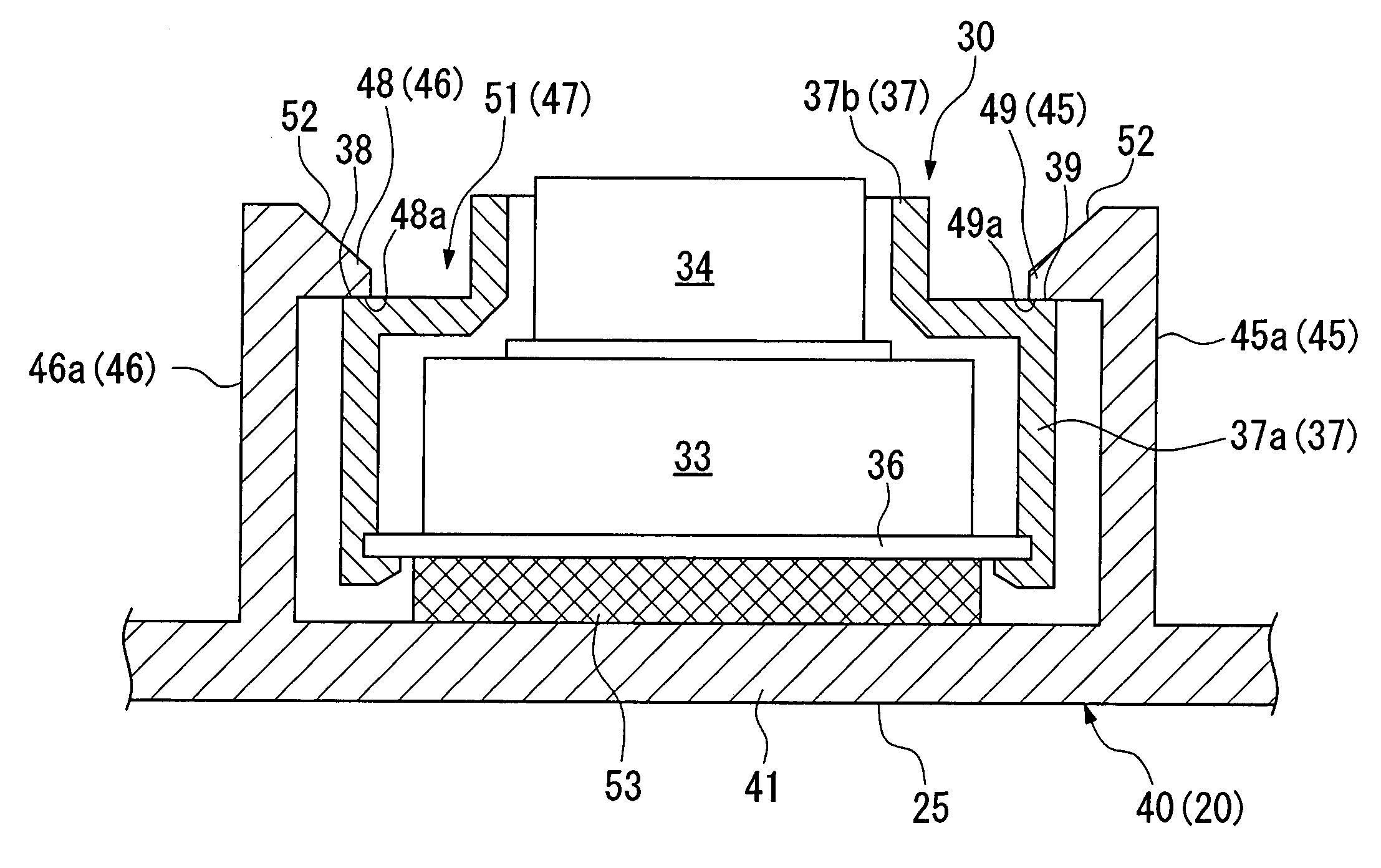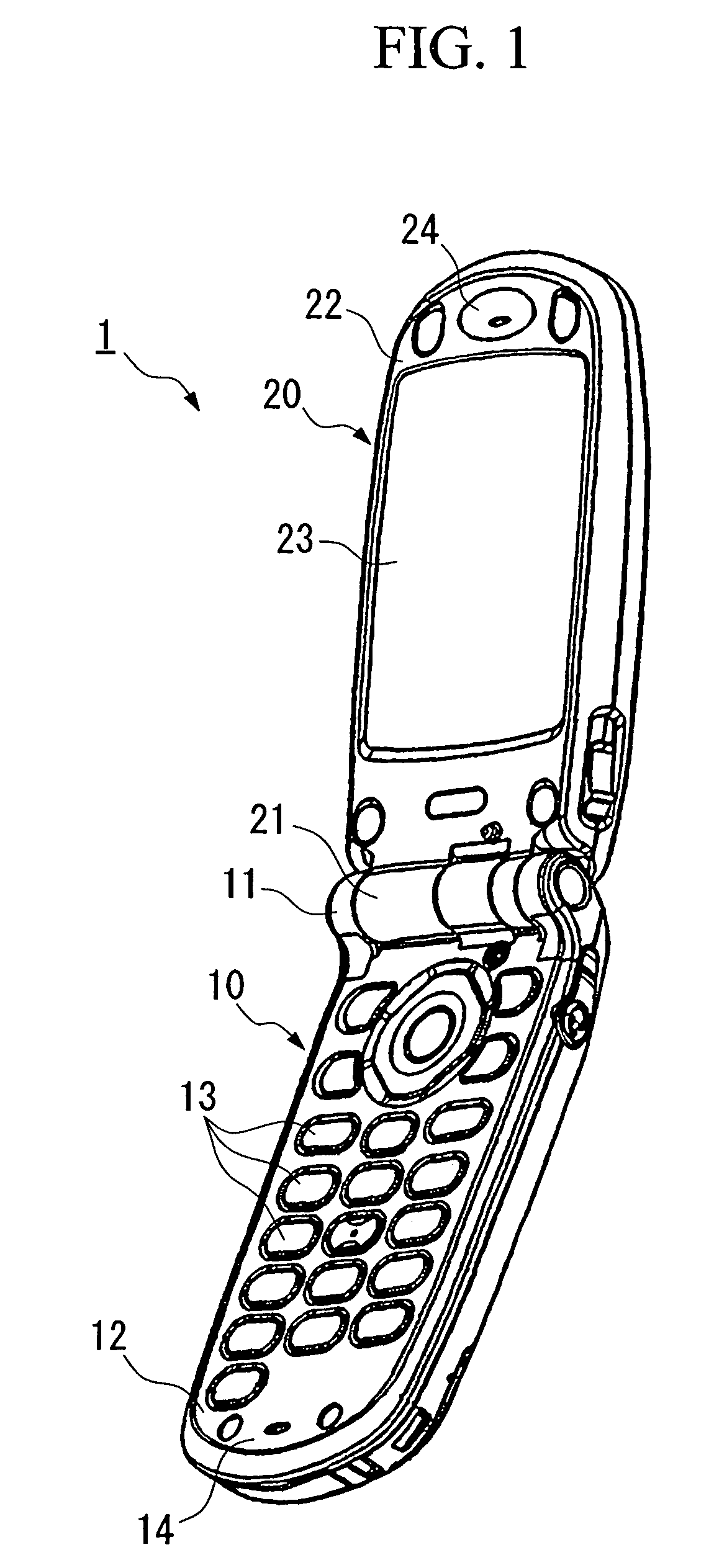Attachment structure of camera module and portable terminal device
a technology of camera module and portability, which is applied in the direction of substation equipment, television systems, casings/cabinets/drawer details, etc., can solve the problems of deteriorating the original properties affecting the internal parts of the camera module, and displacement of the optical axis of the lens par
- Summary
- Abstract
- Description
- Claims
- Application Information
AI Technical Summary
Benefits of technology
Problems solved by technology
Method used
Image
Examples
Embodiment Construction
[0026]Preferred embodiments of the present invention will now be explained based on the accompanying Figures. Note that the following explanation employs as an example, a cellular phone in which, a camera module that employs the camera module attachment structure of the present invention has been mounted.
[0027]Cellular phone 1 (portable terminal device) shown in FIG. 1 is designed as a foldable cellular phone having a first housing 10 and a second housing 20 that are formed in the shape of a flat, roughly rectangular parallelepiped. These housings stacking on top of one another when cellular phone 1 is folded. As shown in FIG. 1 the longitudinal direction of first housing 10 and second housing 20 is defined as the vertical direction. A first hinge 11 is provided at the top side of first housing 10, and a second hinge 21 is provided at the bottom side of second housing 20. By connecting these hinges 11 and 21 via a hinge shaft not shown in FIG. 1, first housing 10 and second housing ...
PUM
 Login to View More
Login to View More Abstract
Description
Claims
Application Information
 Login to View More
Login to View More - R&D
- Intellectual Property
- Life Sciences
- Materials
- Tech Scout
- Unparalleled Data Quality
- Higher Quality Content
- 60% Fewer Hallucinations
Browse by: Latest US Patents, China's latest patents, Technical Efficacy Thesaurus, Application Domain, Technology Topic, Popular Technical Reports.
© 2025 PatSnap. All rights reserved.Legal|Privacy policy|Modern Slavery Act Transparency Statement|Sitemap|About US| Contact US: help@patsnap.com



